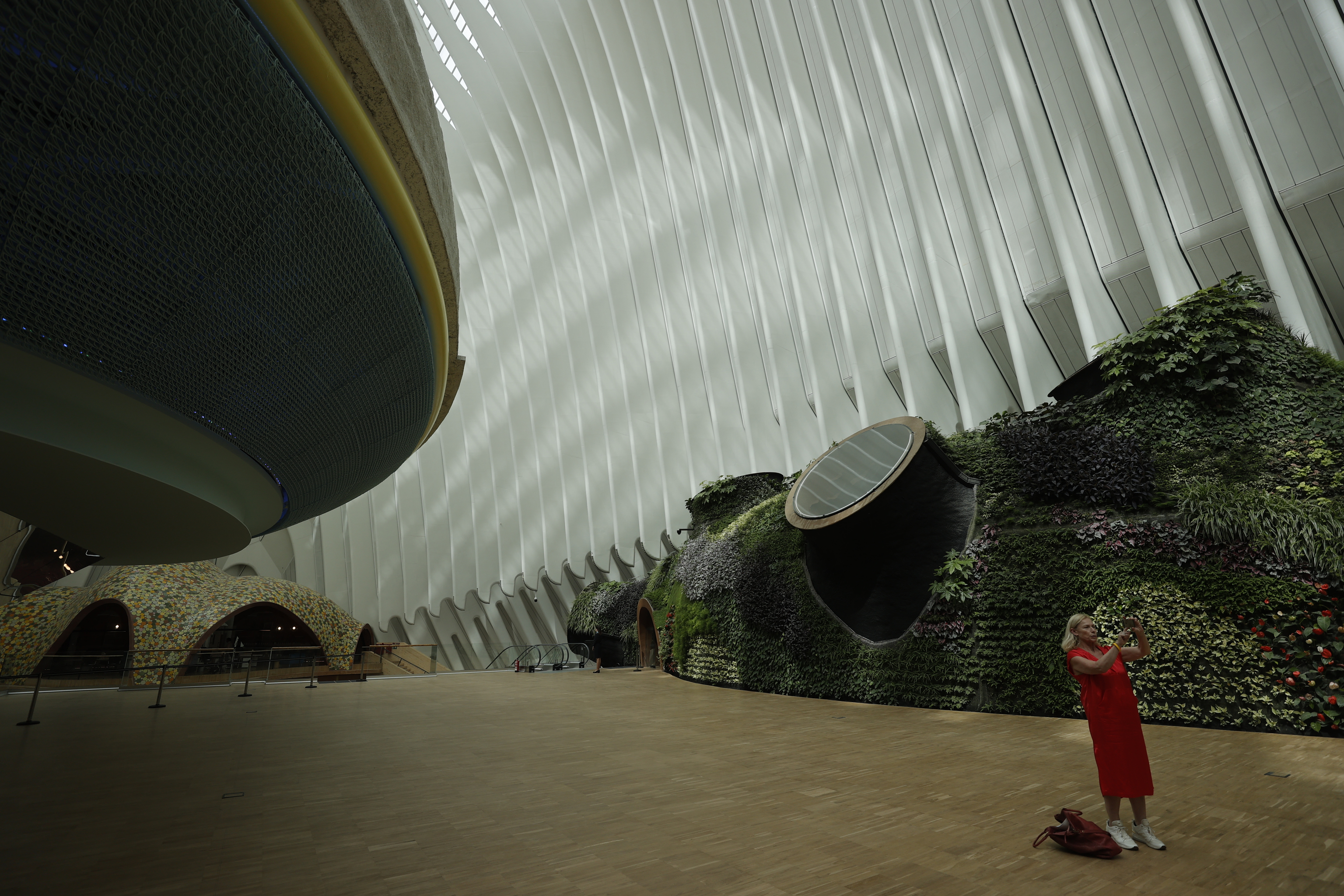The Centollo de Oviedo A lost building
There was a time when Valencia surrendered to its most famous architect, Santiago Calatrava.
To the point that, according to gossips, he was allowed to finish off the touristic City of Arts and Sciences with an imposing building that
covered the only architectural landmark that did not bear his signature
, the Oceanogràfic.
It was the time of the Valencia of the great events, of the Valencia of Francisco Camps and Rita Barberá, of the Valencia of white concrete... That Valencia turned the page but left an unfinished story: that of that last Calatrava building baptized as the Agora, which was never finished and never served any specific purpose.
Until today.
The Ágora has reopened its doors this Tuesday as the ninth CaixaForum in Spain by the Fundación la Caixa which,
16 years after the first stone was laid
, has managed to reconcile Valencia with its Ágora.
Engaging, yes,
a dialogue with Calatrava from the «tension»
, as the architect responsible for providing content to the CaixaForum, Enric Ruiz-Geli, has admitted.
Or, in his own words, to fill in the "skeleton of the whale."
View of CaixaForum Valencia. Manuel BruqueEFE
If Calatrava's Ágora -the envelope- was concrete, Ruiz-Geli's work -the content- is a world of living cells, a landscape.
Compared to the tectonic of Calatrava, the organic of Ruiz-Geli.
Opposite the metallic structure, the wooden structure.
Against white, color.
"They asked us for a building and we made a landscape,"
acknowledged the director of the Cloud 9 studio in Barcelona and professor at Virginia Tech University.
According to the architect, “it is the first time we have won a competition without making a building”.
Because
the building was there, you just had to give it life, nature
, landscape.
Ruiz-Geli has confessed that the inspiration came to him after five hours locked up alone in a building that is like a gigantic luminous shell, with an area of 10,000 square metres.
«That reflection produced a need for life, because a lung was missing, the blood
was missing, the heartbeat was missing
.
What came out was a landscape of organs and cells."
And, indeed, in the CaixaForum it is suspended
up to a cloud
, built with light materials such as pure fiberglass, to give a sensation of floating, of lack of gravity.
It is a unique space that adds to two exhibition rooms, an auditorium for 300 people, a bookstore and a restaurant that were inaugurated this Tuesday by the president of the la Caixa Foundation, Isidre Fainé, the president of the Generalitat, Ximo Puig, and the mayor of Valencia, Joan Ribó.
View of CaixaForum Valencia. Manuel BruqueEFE
In the case of the restaurant, it occupies one side and is almost
hidden by a landscaped roof which, as the architect of Cloud 9 pointed out, is a "living organism"
.
The first garden with organic form in which there is no lack of a bat, dragonflies or birds.
Another of the characteristic elements of the CaixaForum is the ceramic cover of the bookstore, the work of Toni Cumella and supported by a wooden structure reminiscent of the palm trees of Elche.
"It has not been easy to conclude this exceptional project of such magnitude," Fainé acknowledged.
In fact, the first strong point of the CaixaForum is its debut as a cultural container with the
Pharaoh exhibition.
King of Egypt
,
in collaboration with the British Museum
, which was about to back down due to the strong storms last May in Valencia.
Due to its dimensions and concept, the CaixaForum in Valencia has been planned along the same lines as the two great ones in Spain, those in Madrid and Barcelona.
However, according to the deputy director general of the Foundation, Elisa Durà, the forecast is that it could
exceed 800,000 annual visitors
because it is assumed that the CaixaForum in Valencia will have "a tourist component that Madrid and Barcelona do not have."
That is to say, the spaces of these two capitals hardly enter the tourist itinerary with the safety pins, which is precisely what is expected to happen with the CaixaForum in Valencia, "a very unique space".
Not because the Foundation expressly seeks it, but because it is located in the heart of the City of Arts and Sciences in Valencia.
The building is, without a doubt, one of the most emblematic and visible in the area.
As Calatrava wanted, whom after years of turning his back, Valencia pays homage again.
Conforms to The Trust Project criteria
Know more
art
Architecture
Valencia
CaixaBank

